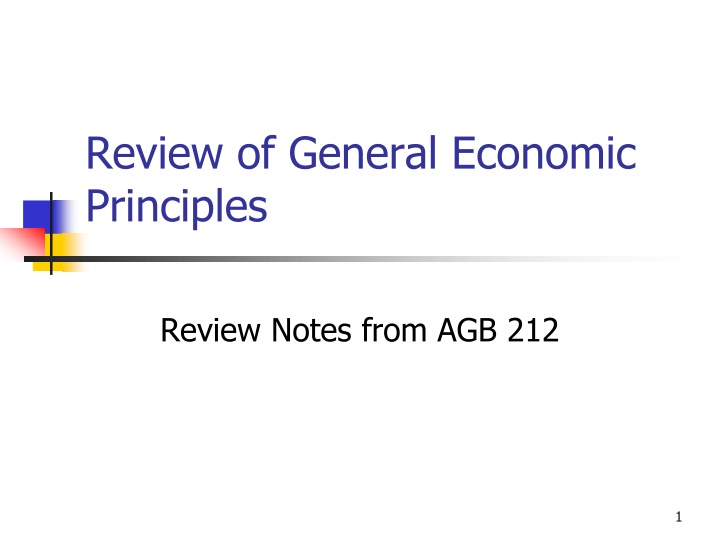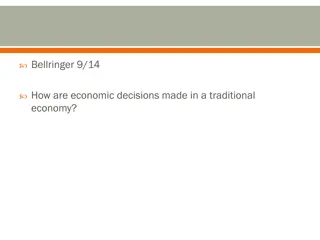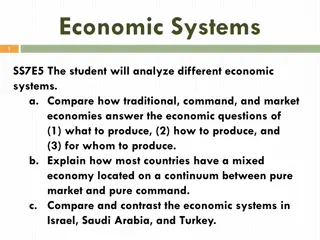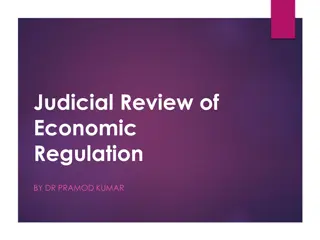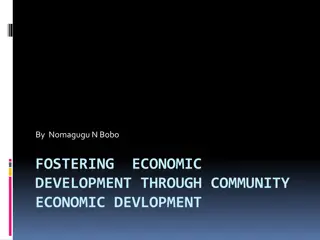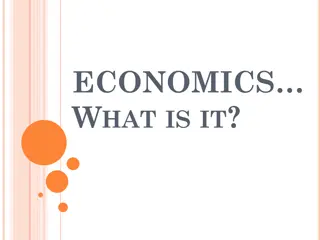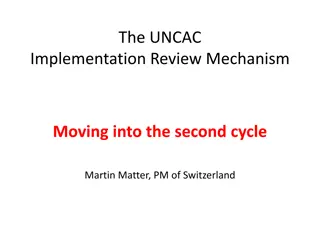Review of General Economic Principles
The review notes cover essential economic principles related to production functions, including production theory, mathematical representation, graphical interpretation, examples, and measures like Marginal Physical Product and Average Physical Product.
Download Presentation

Please find below an Image/Link to download the presentation.
The content on the website is provided AS IS for your information and personal use only. It may not be sold, licensed, or shared on other websites without obtaining consent from the author.If you encounter any issues during the download, it is possible that the publisher has removed the file from their server.
You are allowed to download the files provided on this website for personal or commercial use, subject to the condition that they are used lawfully. All files are the property of their respective owners.
The content on the website is provided AS IS for your information and personal use only. It may not be sold, licensed, or shared on other websites without obtaining consent from the author.
E N D
Presentation Transcript
Review of General Economic Principles Review Notes from AGB 212 1
Agenda Production Theory One input, one output Production Theory Two inputs, one output Production Theory One input, two outputs 2
The Production Function The production function is a process that maps a set of inputs into a set of outputs. The output from a production function is also known as the total physical product. 3
Production Function in Mathematical Terms y = f(x1, x2, , xn) Where y is the level of output Where f( ) is the process that changes the inputs into outputs xi, for i = 1, 2, , n is the quantity of input i AGB 212 had two different production functions it used: y = f(x) and y = f(x1, x2) 4
Production Function Viewed Graphically The production function can graphically show the relationship between an input or two and its/their corresponding output. The production function tends to be concave. A concave (convex) function is when you take a line between any two points on the function, the line will always be equal to or below (above) the function itself. 5
Example of Production Function with One Input and One Output Output input 0 output 0 35 1 9 30 2 16 25 3 21 20 4 24 This function is concave because the line drawn is below the actual function 15 5 25 6 24 10 7 21 5 1 2 3 4 5 6 7 8 Input 6
Marginal Physical Product Marginal physical product (MPP) is defined as the change in output due to a change in the input. MPP = y/ x Where y = y2 y1 and x = x2 x1 x1, y1 is one input output relationship on the production function, while x2, y2 is another input output relationship on the production function. 7
Average Physical Product The average physical product (APP) can be defined as the level of output divided by the level of input used. APP = y/x Where y is the level of output and x is the level of input. APP is a special form of MPP where the x1, y1 point is the origin and the x2, y2 is any point on the function 8
Relationship Between MPP and APP When MPP >APP, APP is increasing. When MPP < APP, APP is decreasing. When MPP = APP, APP has reached its maximum. 9
Stages of Production Stage I of production is where the MPP is above the APP. Stage II of production is where MPP is less than APP but greater than zero. Stage III is where the MPP<0. 10
Graphical View of the Production Stages Y TPP Stage I Stage III Stage II x MPP APP APP x MPP 11
Law of Diminishing Marginal Returns The Law of Diminishing Marginal Returns states that as you add more units of inputs holding all other inputs constant, at some point the marginal physical product decreases. E.g., labor, fertilizer, water, etc. 12
Cost Concepts There are two major costs the business faces in the short-run: Fixed Costs A fixed cost is a cost that exists whether you produce any output or not. Variable Cost A variable cost is a cost that occurs only when production occurs. 13
Cost Concepts Cont. Total Fixed Costs (TFC) Total Variable Costs (TVC) Total Costs (TC) Average Fixed Costs (AFC) Average Variable Costs (AVC) Average Total Costs (ATC) 14
Cost Concepts Cont. Marginal Costs The change in total costs divided by the change in output. TC/ Y The change in total variable costs divided by the change in output. TVC/ Y 15
Graphical Representation of Cost Concepts $ TC TVC TFC Y 16
Graphical Representation of Cost Concepts Cont. $ MC ATC AVC AFC Y 17
Production and Cost Relationships There are two major relationships between the cost curves and the production curves: AVC = w/APP Why? MC = w/MPP Why? 18
Product Curve Relationships When MPP>APP, APP is increasing. => MC<AVC, then AVC is decreasing. When MPP=APP, APP is at a maximum. => MC=AVC, then AVC is at a minimum. When MPP<APP, APP is decreasing. => MC>AVC, then AVC is increasing. Note: => represents implies 19
Revenue Concepts Revenue (R) from one product is defined as the output price (p) multiplied by the quantity (Y). Marginal Revenue is the change in revenue divided by the change in output, i.e., R/ Y. 20
Short-Run Decision Making In the short-run, there are many ways to choose how to produce. Maximize output. Utility maximization of the manager. Profit maximization. Profit ( ) is defined as total revenue minus total cost, i.e., = TR TC. 21
Short-Run Decision Making Cont. When examining output, we want to set our production level where MR = MC when MR > AVC in the short-run. If MR AVC, we would want to shut down. Why? Why set MR = MC? If we can not set MR exactly equal to MC, we want to produce at a level where MR is as close as possible to MC, where MR > MC. 22
Shutdown Rule and Profit Define = TR TC Define TR = p*y Define TC = TVC + TFC Define AVC = TVC/y => TC = AVC*y + TFC => = p*y AVC*y TFC => = [p AVC]*y TFC (Important) 23
Examples of Shutdown Rule Examine profit for all positive y values where py = 6, TFC = 10,000, AVC = 5 and compare them to the profit when y = 0 for these same values. Examine profit for all positive y values where py = 10, TFC = 10,000, AVC = 11 and compare them to the profit when y = 0 for these same values. 24
Theoretical Underpinnings for Shutdown Rule and Profit Need to examine two cases: p > AVC => p AVC > 0 = [p AVC]*y TFC at 0 output = [p AVC]0 TFC at 0 output = TFC at positive output = [p AVC]y TFC Since [p AVC]*y > 0 at positive output > at 0 output Best to operate in the short-run to minimize loss 25
Theoretical Underpinnings for Shutdown Rule and Profit Cont. p < AVC => p AVC < 0 = [p AVC]*y TFC at 0 output = [p AVC]*0 TFC at 0 output = TFC at positive output = [p AVC]*y TFC at positive output = |p AVC|*y TFC at positive output = |p AVC|*y TFC Hence, at positive output < at 0 output Best to shutdown to minimize loss 26
Short-Run Decision When Examining an Input Another way of looking at the production decision is examining the input side rather than the output side. The input side rule says that you will use an input to the point where the Marginal Value of Product (MVP) equals the Marginal Input Cost (MIC), i.e., MVP = MIC. 27
Marginal Value of Product (MVP) Marginal value of product (MVP) is defined as the price of the output (py) multiplied by the marginal physical product (MPP). MVP = MPP * p This also known as Marginal Revenue of Product. 28
Marginal Input Cost (MIC) The marginal input cost is equal the change in total cost divided by a change in the level of input. In a competitive setting, this is equivalent to saying that MIC = w, where w is the price of the input. This is also known as Marginal Factor Cost. 29
Note on Input Selection If you are not able to achieve MIC = MVP, then you want to select the level of input where MVP is closest to MIC and MVP > MIC. The intuition of this rule is the same as for output. 30
Input Substitution In most production processes there is usually the ability to trade-off one input for another. E.g., capital for labor, pasture for corn, etc. Since the cost of inputs vary it may be of interest to see what the trade-off between inputs is that will give us the same level of output. 31
Isoquants An isoquant shows the trade-off between two inputs that will give you the same level of output. It is the differing input bundles that provide the same level of output. Output tends to increase when isoquants move away from the origin in the positive orthant. 32
Isoquants Graphically x2 Increasing Output 10 7 Q = 100 Q = 70 x1 = tractor time x1 2 5 x2 = labor time Q = quantity of potatoes 33
Marginal Rate of Technical Substitution The Marginal Rate of Technical Substitution (MRTS) is defined as the trade-off of one input for another input that will maintain a particular level of output. It is the slope of the isoquant. 34
Marginal Rate of Technical Substitution Mathematically MRTS = x2/ x1 = (x22-x21)/(x12-x11) Where x12, x22 is one point on the isoquant and x11, x21 is another point on the isoquant. How do we interpret the MRTS? 35
Graphical Representation of MRTS x2 10 MRTS = (10-7)/(2-5) = -1 x2 7 Q = 70 x1 = tractor time x1 2 5 x2 = labor time Q = quantity of potatoes x1 36
Note on MRTS Since output is constant when dealing with MRTS, we can say that MRTS = -MPPx1/MPPx2 Where MPPx1 is the marginal physical product due to input x1 and MPPx2 is the marginal physical product due to input x2. 37
Cost Function The cost function is a summation of the inputs multiplied by their corresponding input costs. This cost function can be represented by the following: C = c(x1, x2, ,xn)= c1x1 + c2x2+ + cnxn Where ci is the price of input i, xi, for i = 1, 2, , n Where C is some level of cost and c( ) is a cost function 38
Iso-Cost Line The iso-cost line is a graphical representation of the cost function where the total cost C is held to some fixed level. This is similar to the budget constraint in consumer theory. 39
Input Use Selection There are two ways of examining how to select the amount of each input used in production. Maximize output given a certain cost constraint Minimize cost given a fixed level of output Both give the same input selection rule. 40
Maximizing Output Graphically: Finding the highest isoquant that is tangent to the given iso-cost line x2 Not feasible given costs 10 Optimal x2 Y = 5000 Y = 3000 Y=2000 Y =1000 100 Optimal x1 x1 41
Minimize Cost Graphically: Finding the lowest iso-cost line that is tangent to the given isoquant x2 Not the lowest cost Optimal x2 Y = 3000 Optimal x1 x1 42
The Multiple Product Firm Many producers have a tendency to produce more than one product. This allows them to minimize risk by diversifying their production. Personal choice. The question arises: How do you decide how much of each product do you produce? 43
Two Major Types of Multiple Production Multiple products coming from one production function. E.g., wool and lamb chops Mathematically: Y1, Y2, , Yn = f(x1, x2, , xn) Where Yi is output of good i Where xi is input i 44
Two Major Types of Multiple Production Cont. Multiple products coming from multiple production functions where the production functions are competing for the same inputs. E.g., corn and soybeans 45
Two Major Types of Multiple Production Cont. Mathematically: Y1= f1(x11, x12, , x1m) Y2= f2(x21, x22, , x2m) Yn= fn(xn1, xn2, , xnm) Where Yi is output of good i Where xij is input j allocated to output Yi Where Xj = x1j + x2j+ + xnj and is the maximum amount of input j available. 46
Production Possibility Frontier A production possibility frontier (PPF) tells you the maximum amount of each product that can be produced given a fixed level of inputs. The emphasis of the production possibility function is on the fixed level of inputs. These fixed inputs could be labor, capital, land, etc. 47
PPF Cont. All points along the edge of the production possibility frontier are the most efficient use of resources that can be achieved given its resource constraints. Anything inside the PPF is achievable but is not fully utilizing all the resources, while everything outside is not feasible. 48
Marginal Rate of Product Transformation (MRPT) MRPT can be defined as the amount of one product you must give up to get another product. This is equivalent to saying that the MRPT is equal to the slope of the production possibility frontier. MRPT = Y2/ Y1 Also known as Marginal Rate of Product Substitution. 49
Total Revenue Function for Multiple Products The total revenue function is the summation of all the revenues received from production of the multiple products. TR = r(Y1, Y2, , Yn) = p1Y1 + p2Y2+ + pnYn Where pi is the price of output Yi Where TR is the total revenue received from production of the many outputs 50
